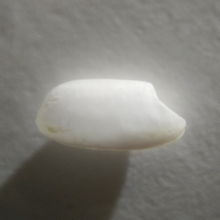Rice, known as the seed of the grass species Oryza sativa (Asian rice) or O. glaberrima (African rice), can be further categorized as wild rice, referring to the species of the genera Zizania and Porteresia. Transitioning to the topic of wild rice, it is important to note that this term can also encompass primitive or uncultivated varieties of Oryza.
Rice, being a cereal grain, holds a significant position in the world’s food supply. It is not only the most widely consumed staple food for over half of the global population but also ranks third in terms of agricultural commodities, after sugarcane and maize. Moreover, considering that significant portions of sugarcane and maize crops are allocated for non-human consumption, the crucial role of rice in human nutrition becomes even more apparent. In fact, rice accounts for more than one-fifth of the calories consumed worldwide. Furthermore, the versatility of rice is enhanced by the existence of numerous varieties, catering to different culinary preferences based on regional distinctions.


How to cultivate rice
The traditional method for cultivating rice is flooding the fields while, or after, setting the young seedlings. This simple method requires sound irrigation planning, but it reduces the growth of less robust weed and pest plants that have no submerged growth state and deters vermin. While flooding is not mandatory for the cultivation of rice, all other methods of irrigation require higher effort in weed and pest control during growth periods and a different approach for fertilizing the soil.




Rice is more available now
Rice, being a monocot plant, is typically grown as an annual crop. However, in tropical areas, it can survive as a perennial and yield a ratoon crop for up to 30 years. When it comes to cultivating rice, ample water, and labor-intensive efforts are required, making it well-suited for regions with low labor costs and high rainfall. Moreover, rice can be grown in various terrains, including steep hills and mountainous areas, thanks to the utilization of water-controlling terrace systems. Over centuries of trade and exportation, rice has become a staple in many cultures worldwide. Notably, rice production and consumption were responsible for 4% of global greenhouse gas emissions in 2010. (Source)
Ingredients
2 cups white rice
5 cups chicken broth
2 tablespoons oil
1 pound sausage, sliced
1 clove garlic
one large onion
1 stalk celery, chopped
1 green pepper
1/4 teaspoon cayenne pepper
1/4 cup fresh parsley
Salt and pepper to taste
Directions
To make dirty rice with sausage, let’s begin by boiling a mixture of rice along with 4 cups of broth. Once the mixture comes to a boil, we can then simmer it for 20 minutes. Meanwhile, on medium-high heat, heat some oil and brown the sausage thoroughly. Next, we can add garlic, onion, celery, and green pepper to the skillet and cook the mixture for an additional 5 minutes, ensuring that all the flavors meld together. Then, it’s time to season the mixture with salt, pepper, and cayenne, and pour in 1 cup of broth. We’ll allow the mixture to simmer and reduce slightly. Finally, stir in the cooked rice, making sure it is well coated with the flavorful mixture. For a finishing touch, let’s garnish the dish with fresh parsley. Now, it’s time to savor the delightful flavors of homemade dirty rice with sausage!

Also, try Chicken Sausage Vegetable Saute’
